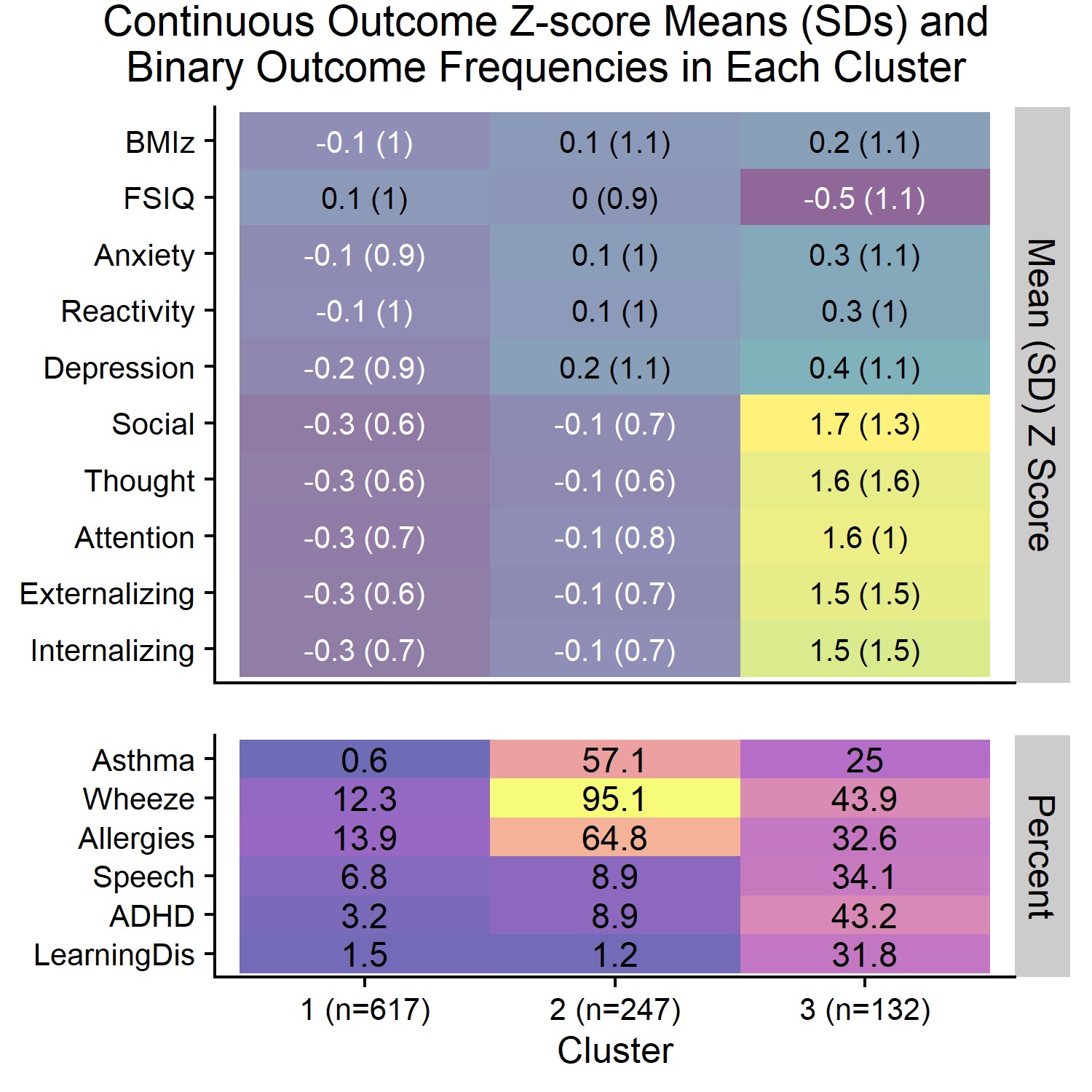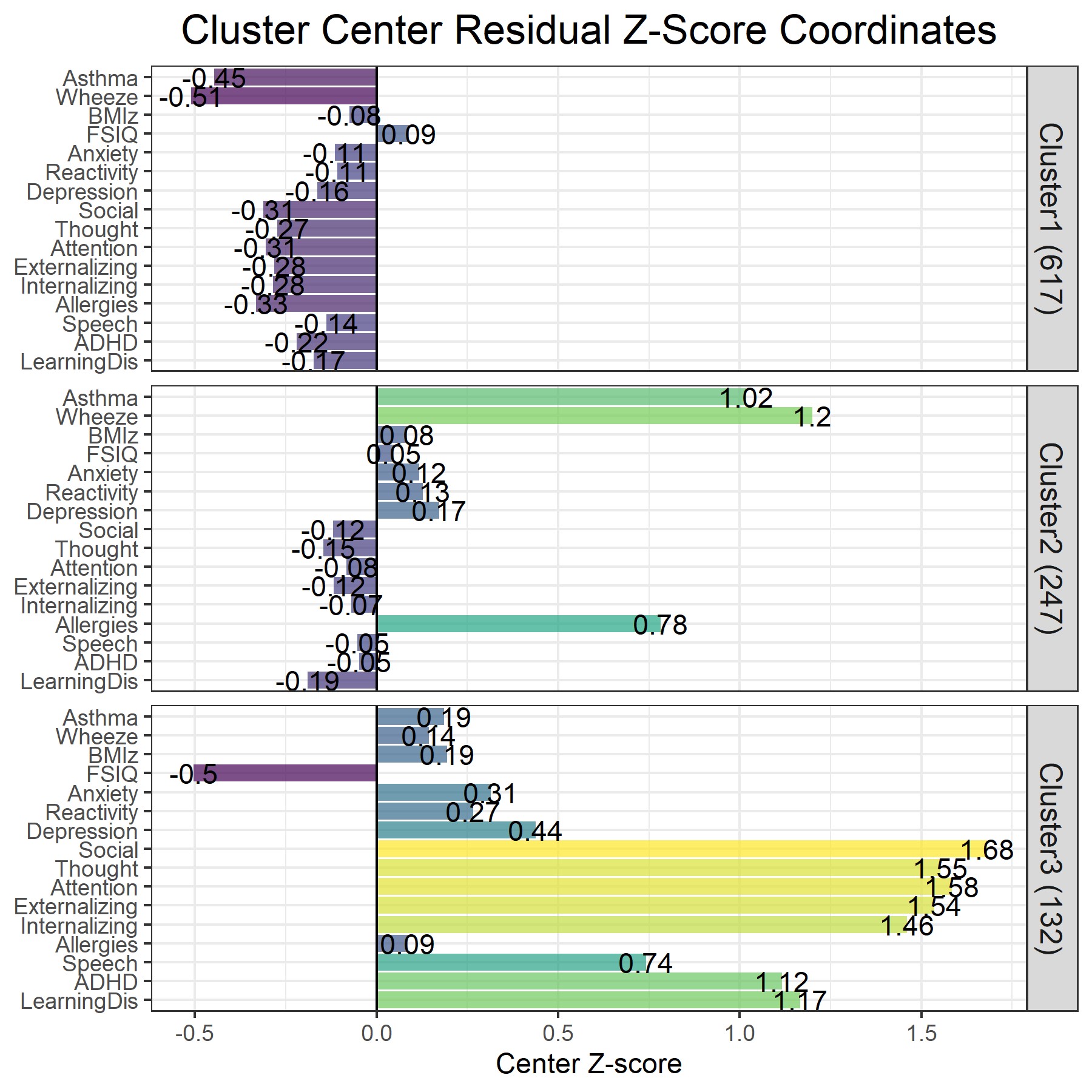Health Equity/Social Determinants of Health
Health Equity/Social Determinants of Health 1
514 - Determining Subpopulations of Children with Multiple Chronic Health Outcomes using Unsupervised Clustering
Publication Number: 514.116

Drew B. Day, PhD (he/him/his)
Epidemiologist
Seattle Children's Research Institute
Seattle, Washington, United States
Presenting Author(s)
Background:
Understanding co-occurrence patterns of pediatric chronic health conditions can lead to improved clinical care and point to common biological etiologies. Traditional epidemiologic analyses focus on individual outcomes, but increased insight can be gained by understanding patterns of co-occurrence.
Objective:
To identify clusters of chronic respiratory, obesity-related, and neurodevelopmental outcomes in children and to examine associations between cluster membership and demographic factors.
Design/Methods:
In three prospective birth cohort studies (ECHO PATHWAYS), we clustered 16 health outcomes for 996 children. Outcomes included age 4-9 BMI z-score, full-scale IQ, anxiety score, irritability score, depression score, five behavioral problem subscale scores (social, thought, attention, externalizing, and internalizing problem scores), and parent-reported ever asthma, wheeze, allergies, speech problems, ADHD, and learning disabilities. To form generalizable clusters across study sites, each variable was regressed on study site (n=6), and scaled residuals were clustered using k-means clustering. Relative risks for contrasts between clusters associated with demographic variables including child sex, maternal age, income, education, race/ethnicity, and prepregnancy BMI were assessed in bivariate models.
Results: Three clusters emerged, including a healthy cluster 1 (n=617) with low scores and prevalences of all outcomes; cluster 2 (n=247) with high asthma, wheeze, and allergy frequencies; and cluster 3 (n=132) with relatively high scores for all outcomes. Unadjusted models suggested lower risks of being in either clusters 2 or 3 for girls (risk ratios (RR (95% CI)): 0.60 (0.48, 0.74) and 0.57 (0.41, 0.78), respectively). In addition, children born to mothers with a higher household income (2-fold higher income RR: 0.59 (0.44, 0.77)) or a college degree (RR: 0.64, (0.46, 0.89)) had lower risks of being in cluster 3.
Conclusion(s): These results identified subpopulations of children with co-occurring health outcomes, including relatively high levels of BMI, respiratory, and neurodevelopmental outcomes that may reflect a shared etiologic pathway that co-occur with greater frequency in children with lower SES. This motivates further investigation into the role of sex in shared underlying mechanisms of these health outcomes and underscores the importance of poverty reduction in reducing the burden of chronic disease in childhood.

